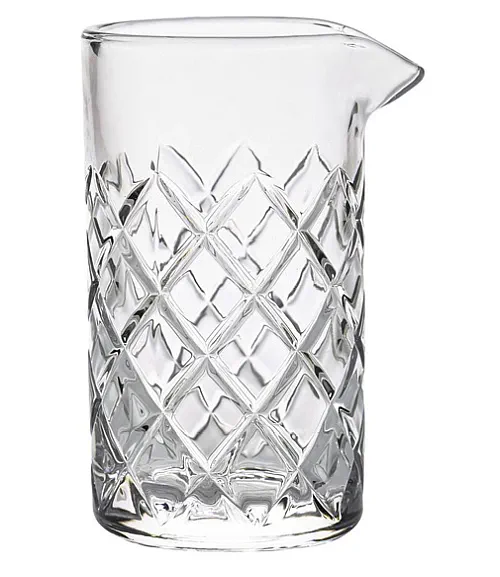The Essential Role of Mixing Glass in Crafting Perfect Cocktails
In the world of cocktail making, the mixing glass stands as a cornerstone of the craft. This large, elegantly simple glassware is not just a container but a tool that shapes the character of stirred cocktails, ensuring a blend that’s as smooth in texture as it is rich in flavor. Understanding the mixing glass’s function, history, and usage is key for both budding mixologists and seasoned cocktail enthusiasts.
What is a Mixing Glass?
A mixing glass is a thick, sturdy glass with a pouring lip, designed specifically for preparing stirred cocktails. Unlike shaker tins, the mixing glass offers a clear view of the ingredients as they blend, allowing for precision and control in the cocktail-making process. Its size varies but is typically large enough to hold a good quantity of ice and ingredients, facilitating a proper stir.
History and Evolution
The history of the mixing glass parallels the evolution of cocktails themselves. Originally, cocktails were stirred in any available glass or tin. However, as the art of mixology evolved, so did the tools. The mixing glass emerged as a response to the need for a more refined, specialized tool for stirring drinks, elevating the cocktail experience from mere mixing to an art form.
Why Stir in a Mixing Glass?
Stirring is a technique used primarily for cocktails that are spirit-forward, like the classic Martini or Manhattan. The goal is to chill and dilute the drink just enough to harmonize the flavors without clouding the clarity of the spirits. The mixing glass is perfect for this:
- Temperature Control: The thick glass insulates the contents, maintaining a consistent temperature as the drink is stirred.
- Clarity and Texture: Stirring in a glass ensures that the cocktail remains clear without the aeration and cloudiness that shaking can introduce.
- Aesthetic and Ritual: The transparency of the glass allows both the bartender and the guest to watch the ingredients meld together, turning drink preparation into a visual spectacle.
Choosing the Right Mixing Glass
When selecting a mixing glass, consider the following:
- Size and Shape: A good mixing glass should be large enough to comfortably stir a cocktail with plenty of ice. The classic conical shape is not just aesthetically pleasing but also functional, allowing for a smooth stirring motion.
- Durability and Quality: Look for a glass that’s thick and sturdy, capable of withstanding frequent use and the occasional knock.
- Pouring Lip: A well-designed lip ensures a smooth, spill-free pour.
Incorporating the Mixing Glass into Your Cocktail Repertoire
To fully appreciate the role of the mixing glass, try preparing a classic stirred cocktail. Here’s a simple recipe to get you started:
Classic Martini Recipe
Ingredients:
Instructions:
- Fill the mixing glass with ice.
- Add gin and vermouth.
- Stir gently for about 30 seconds to chill and dilute.
- Strain into a chilled martini glass.
- Garnish with a lemon peel or olive.
Read more: In the equipment category, you can learn about the following bar tools and the recipes that can be prepared with them: atomizer, bar spoon, cold dripper, dehydrator, electric mixer, fine grater, ice pick and ice scoop, juicers, knife, lemon squeezer, measuring cup, mixing glass, muddler, shaker, strainer, tea strainer, tongs, and whipping siphon and soda siphon.
Conclusion
The mixing glass is more than just a piece of glassware; it’s a testament to the sophistication and history of cocktail making. Whether you’re a professional bartender or a home enthusiast, mastering the use of the mixing glass is a step towards perfecting the art of the cocktail.

